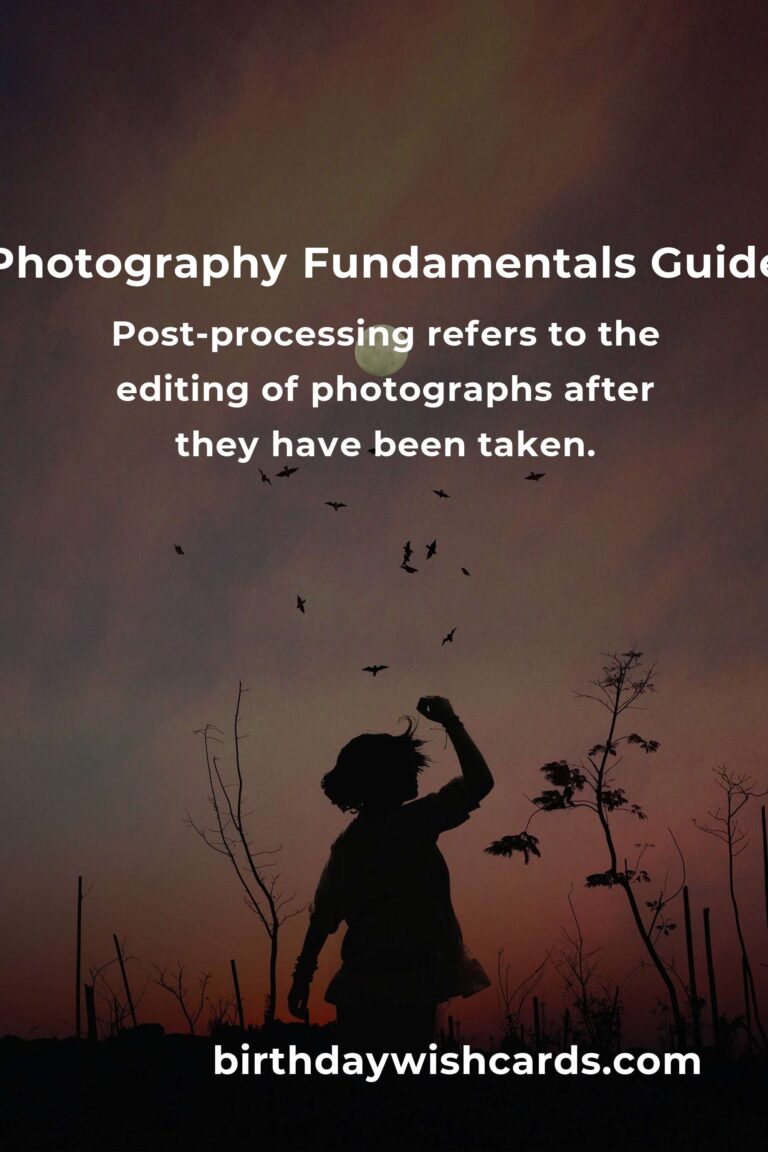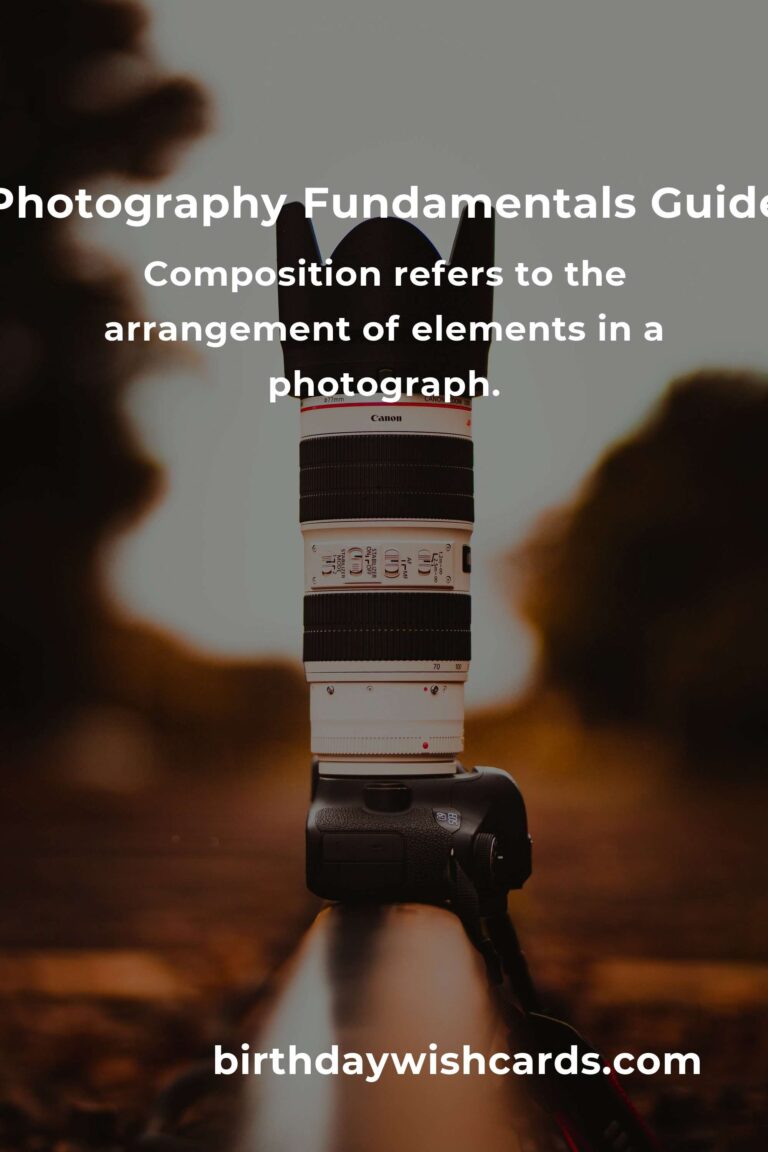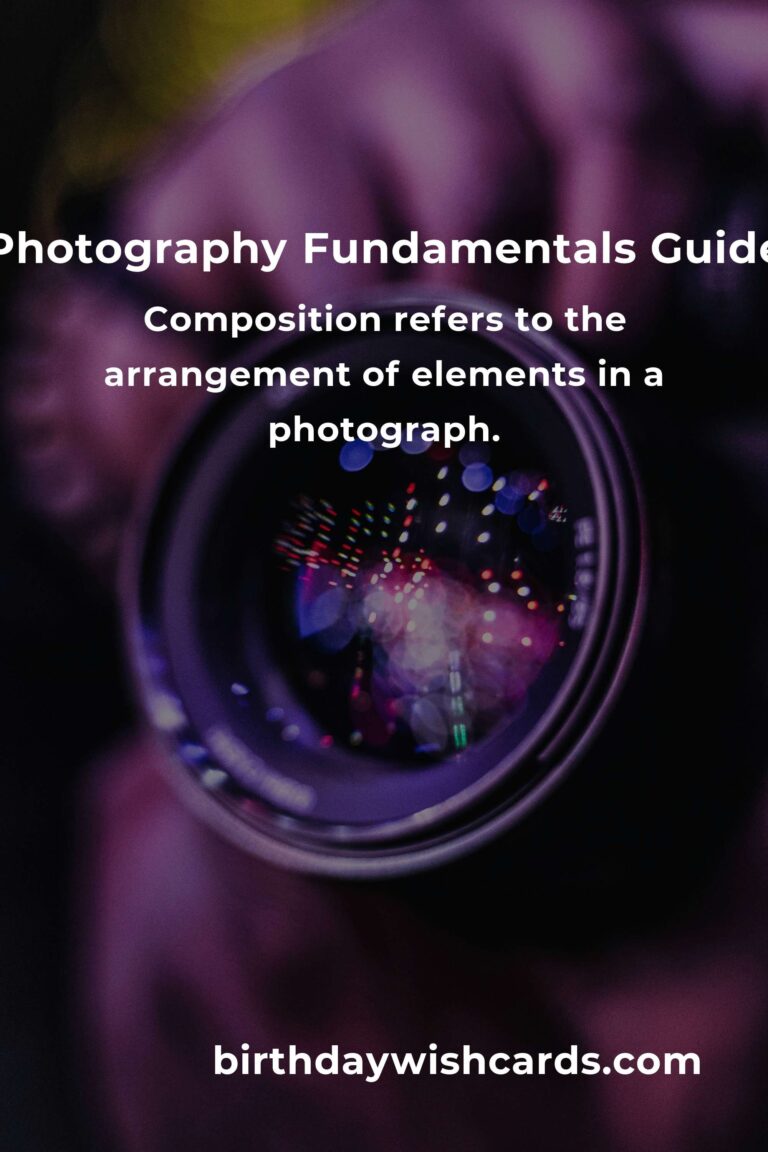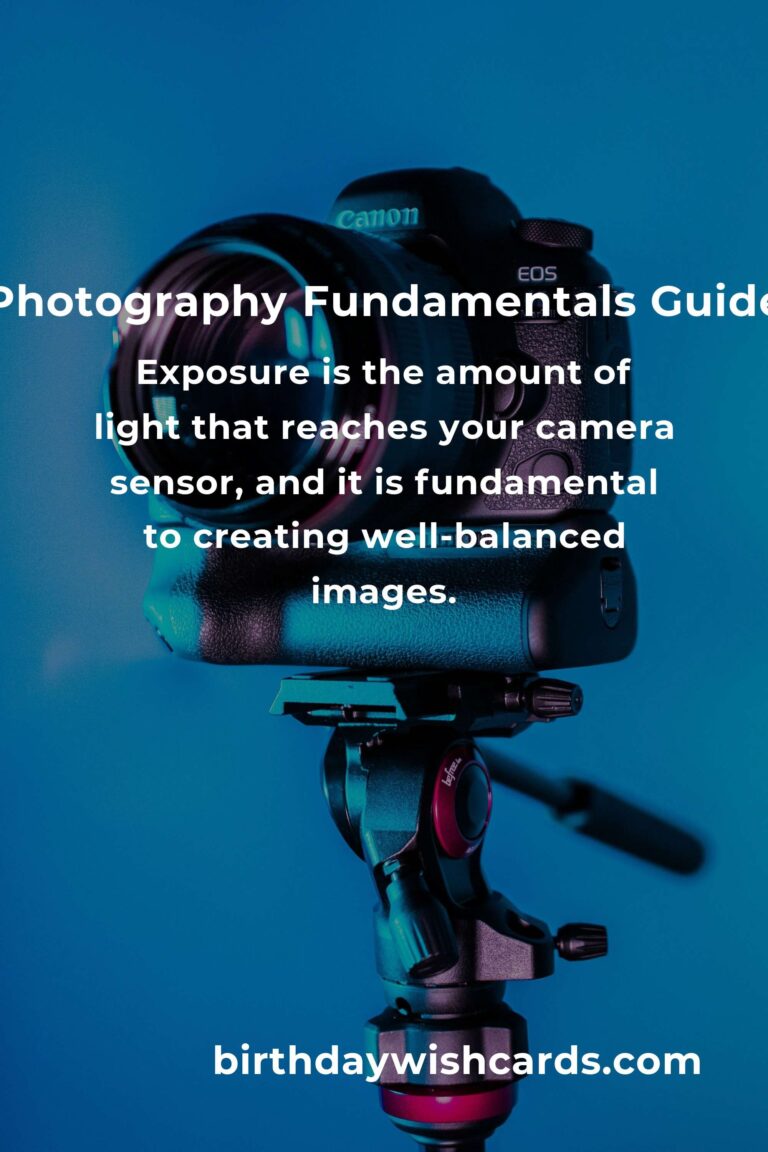
Photography is a captivating art form that allows us to capture moments and tell stories through images. Whether you’re a complete beginner or someone looking to refine your skills, understanding the basic principles of photography is crucial. This comprehensive guide will take you through the essential photography fundamentals that every aspiring photographer should master.
Understanding Exposure
Exposure is the amount of light that reaches your camera sensor, and it is fundamental to creating well-balanced images. Three main components control exposure: aperture, shutter speed, and ISO. These elements work together to determine the brightness and clarity of your photographs.
Aperture
Aperture refers to the opening in a camera lens through which light passes. It is measured in f-stops, such as f/2.8, f/4, and f/5.6. A lower f-stop means a larger aperture, allowing more light to enter the camera, ideal for low-light situations and creating a shallow depth of field.
Shutter Speed
Shutter speed determines how long the camera shutter remains open to let light in. It is measured in seconds or fractions of a second, such as 1/500, 1/250, or 1/60. Faster shutter speeds freeze motion, while slower speeds create motion blur, which can be used creatively in photography.
ISO
ISO measures the sensitivity of your camera sensor to light. A lower ISO value (e.g., 100 or 200) is ideal for bright environments, while higher ISO settings (e.g., 800 or 1600) are useful in low-light conditions. However, increasing ISO can introduce noise or grain into your photos.
Composition Techniques
Composition refers to the arrangement of elements in a photograph. Mastering composition techniques can dramatically improve the visual appeal of your images.
Rule of Thirds
The rule of thirds involves dividing an image into nine equal parts using two horizontal and two vertical lines. Placing the main subject along these lines or at their intersections creates a more balanced and engaging photo.
Leading Lines
Leading lines are lines within an image that guide the viewer’s eye towards the main subject. These can be roads, rivers, or architectural elements that naturally draw attention.
Framing
Framing involves using elements within the scene to create a ‘frame’ around the subject, adding depth and focus to the photograph. This technique can be achieved with natural elements like trees or man-made structures like windows.
Lighting in Photography
Lighting can make or break a photograph. Understanding how to manipulate and work with light is crucial for creating stunning images.
Natural Light
Natural light is often preferred for its soft and flattering qualities. The golden hour, which occurs shortly after sunrise or before sunset, provides warm and diffused light that is ideal for photography.
Artificial Light
Artificial light sources, such as flash or studio lights, offer control over the lighting conditions and can be used to create dramatic effects. Understanding how to balance artificial light with ambient light is key to achieving desired results.
Post-Processing Basics
Post-processing refers to the editing of photographs after they have been taken. It allows photographers to enhance their images and correct any imperfections.
Software like Adobe Lightroom and Photoshop are popular for post-processing tasks. Basic edits include adjusting exposure, contrast, color balance, and sharpness. However, it’s important to maintain the natural essence of the photograph without over-editing.
Conclusion
Mastering the fundamentals of photography is the first step towards becoming a skilled photographer. By understanding exposure, composition, lighting, and post-processing, you can elevate your photography and capture stunning images that tell compelling stories. Remember, practice is key, so keep experimenting and refining your skills.
Photography is a captivating art form that allows us to capture moments and tell stories through images. Exposure is the amount of light that reaches your camera sensor, and it is fundamental to creating well-balanced images. Composition refers to the arrangement of elements in a photograph. Lighting can make or break a photograph. Post-processing refers to the editing of photographs after they have been taken.
#Photography #PhotoTips #CameraBasics #PhotographyFundamentals #BeginnerPhotography













